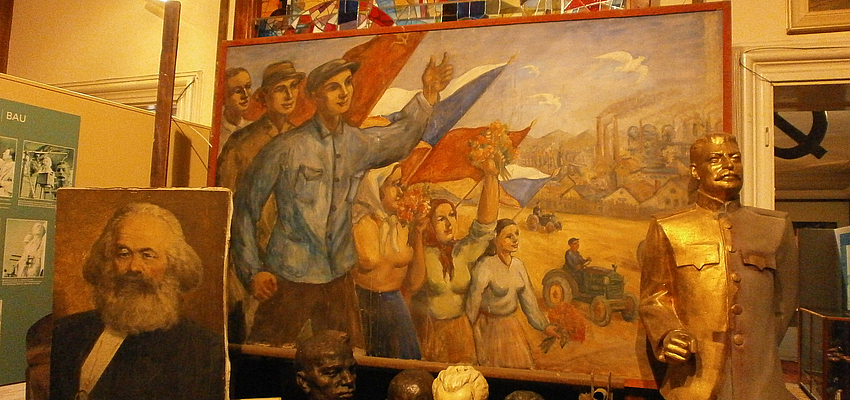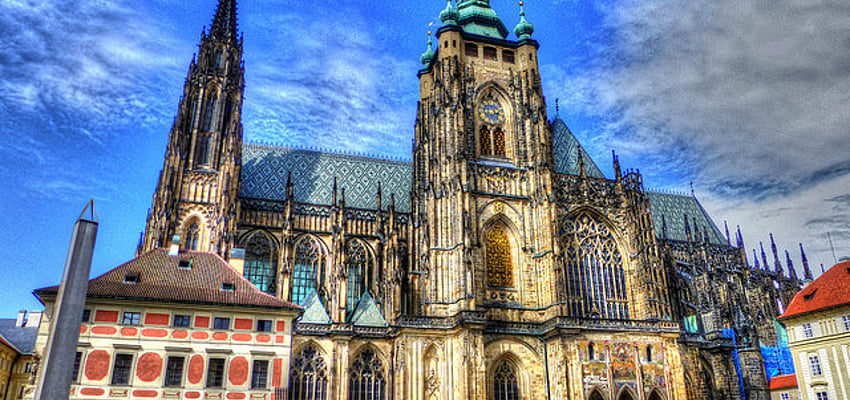


Czech history is typical of that of Eastern Europe. Between foreign occupations, religious conflicts and the constant shifting of borders, the biggest historical developments help you to understand the urban landscape of the bigger cities as well as the culture of its population.
At the turn of our period, Bohemia and Moravia were occupied by Proto-Celtic populations and Boii, after which the region of Bohemia is named. The fifth century saw the arrival of Slavic populations, and in the eighth century Byzantine missionaries such as Saints Cyril and Methodius, the inventors of the Cyrillic alphabet. With that, the region began to become Christian – and literate. For many centuries, the Catholic church was to remain the only means by which the written language was developed.
From 907 onwards, the Hungarian invasion bought about the split between Slovaks and Czechs, the latter becoming autonomous. In the years which would follow, Wenceslaus of Bohemia came to power. He then lost power to his brother and assassin, Boleslav, before being beatified and made the patron saint of Bohemia.
The city of Prague became the centre of power at the end of this very century. In the 14th century, Charles would become the King of Bohemia and also Holy Roman Emperor, as Bohemia formed part of the empire. Prague, having become capital of the empire, shone bright. The university was built – the first in Central Europe – as were the Charles Bridge, the new town (Nove Mesto), castle and St Vitus Cathedral

After this prosperous period, the region was shaken by religious conflict. The Praguer theologian, Jean Hus, having come to plead for the reform of the church under the Council of Constance, was burned alive for religious heresy. This provoked his followers to revolt against Catholics in a bloody civil war. Repression by Austria in turn led to the Thirty Years' War, a "dark period" for Czechs. Protestants were converted by force. More and more churches were built in Prague and monastries in the remainder of the country. Austrian rule continues until the 19th century, in spite of the European revolutions of 1848. These did, however, fuel desire for independence and affirmation of a national identity.
Czechoslovaks had to wait until 1918 and the defeat of Germany before they gained independence. But they amounted to just 50% of the population at this time. The fact that the population also consisted of Germans, Hungarians and Polish was to make it easier for Hitler to reoccupy Sudetenland, a predominantly German region, in 1938. In 1939, the occupation extended to the Czech region. The Slovak Republic proclaimed its independence.
In 1945, the country is re-established within its own borders. German and Hungarian minorities are deported and their belongings confiscated. 1948 saw the communists come to power. Klement Gottwalt founded a cult based around the leader's personality. The Prague Spring in 1968 once again served to highlight the importance of Prague within Europe, inspiring other USSR republics to move towards "the human face of socialism". This move was however sanctioned, with the invasion of Warsaw Pact troops.
A year later, Czechoslovakia became a federal state divided into two regions. In Prague, the fall of the Communist Bloc led to the Velvet Revolution of 1989 and the Velvet divorce, whereby it split into Slovakia and the Czech Republic. Ten years later, Czechs approved EU accession in a referendum, joining the union in 2004. However, the Czech Republic has maintained its own currency, the Czech koruna.